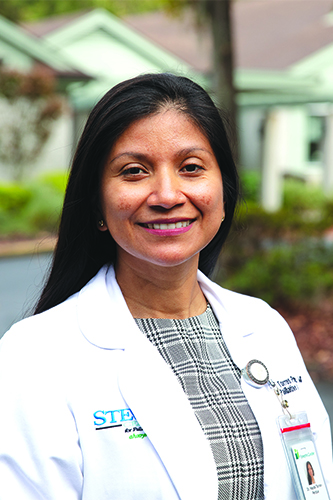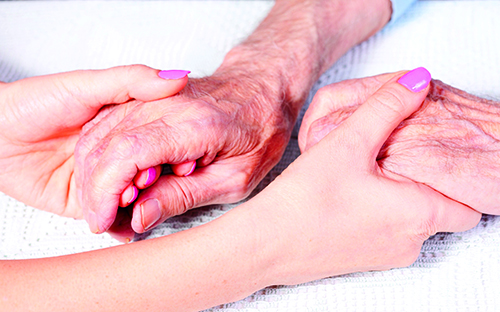Defining Palliative Care
A team of specialists treats the whole person
When patients are facing a serious, potentially life-threatening illness such as cancer, kidney disease, COPD, or congestive heart failure, they are fighting more than the disease. They are often dealing with painful side effects from treatment, financial stress over treatment cost and the overwhelming emotional toll for themselves and their loved ones.
To help these patients, physicians at St. Joseph’s/Candler may recommend palliative care. This involves a special team that includes a board-certified Palliative Care/Hospice physician, nurse practitioner, nurse, social worker, dietitian, and chaplain.

St. Joseph’s/Candler partners with the Steward Center for Palliative Care, which is part of Hospice Savannah, to provide these services to patients while providing a seamless transition from inpatient to outpatient care. Often, the first step involves correcting various misconceptions about palliative care.
“I ask patients and families what they know about palliative care, and they are scared to talk about it,” says Hayda Perdue, MD, Medical Director for Hospice Savannah. “Because if you Google it, it is always associated with hospice.”
What Is Palliative Care?
One way to think of palliative care is treating the whole person, not just the disease. Palliative care focuses on the physical, emotional, and spiritual symptoms that often accompany long-term illness in an effort to improve patients’ overall quality of life.
“This is like any other specialty, except that it’s more interdisciplinary,” Dr. Perdue explains. “With a palliative care team, we not only help with physical symptoms such as pain or nausea, but also the stressors in life, such as finances, and emotional symptoms such as anxiety or depression.”
A chaplain is also available for spiritual distress.
“Beliefs, values and culture cannot be seen in a medical exam,” Dr. Perdue says. “Yet we know this is a crucial part of treating someone with a long-term illness.”
A distinct difference between palliative care and hospice care is that palliative care can be offered at any stage of a patient’s illness and the patient can continue to seek curative treatment at the same time.
“The palliative care team gives you the tools to cope with your diagnosis better and tolerate your treatment better,” Dr. Perdue says. “It provides these tools to your family and caregivers as well, supporting them on this journey with you.”
Palliative care doesn’t alter or replace the plan you made with your regular doctor. In fact, it allows your doctor to stay focused on the illness itself, while palliative care helps with everything else.
Stressors
What else is there to worry about besides getting better? Every person is different, but Dr. Perdue sees common stress factors among her patients, and in some cases, those stressors can make their physical pain worse.
“For example, there are different levels of financial stressors, whether it is confusion about what is covered by insurance, problems with housing or even paying for the gas to drive to your appointments,” Dr. Perdue says. “Helping patients find resources for these issues is part of managing the emotional distress that could affect their treatment.”

Many patients can be discouraged by side effects of curative treatment, even when it is effective. They may have to deal with pain, nausea, or vomiting.
“In the outpatient setting, we have the SJ/C Center for Palliative Care on the Candler Hospital campus where we can help manage severe pain, provide hydration and relieve symptoms of side effects,” Dr. Perdue says. “For those who are admitted to St. Joseph’s Hospital or Candler Hospital, the same palliative care team provides symptom management while you are receiving care as an inpatient.”
In addition to the inpatient and outpatient settings, palliative care can also be provided in a patient’s home.
Having The Conversation
Dr. Perdue is board certified in Internal and Hospice and Palliative Medicine, and is fluid in both English and Spanish. She understands the strong link that most people perceive between palliative care and hospice care. But she hopes patients and families will not be afraid to talk about it.
“The conversation about palliative care is talking about your goals,” she says. “Hospice might be a part of that conversation for some patients, but not all. Our focus is on how we can benefit you and give you the best possible quality of life, regardless of the stage of the disease.”
Learn more about the Steward Center for Palliative Care here.